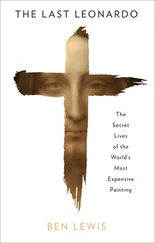Leonardo da Vinci - The Notebooks of Leonardo Da Vinci. Complete
Здесь есть возможность читать онлайн «Leonardo da Vinci - The Notebooks of Leonardo Da Vinci. Complete» — ознакомительный отрывок электронной книги совершенно бесплатно, а после прочтения отрывка купить полную версию. В некоторых случаях можно слушать аудио, скачать через торрент в формате fb2 и присутствует краткое содержание. Жанр: foreign_prose, foreign_home, visual_arts, foreign_antique, на английском языке. Описание произведения, (предисловие) а так же отзывы посетителей доступны на портале библиотеки ЛибКат.
- Название:The Notebooks of Leonardo Da Vinci. Complete
- Автор:
- Жанр:
- Год:неизвестен
- ISBN:нет данных
- Рейтинг книги:3 / 5. Голосов: 1
-
Избранное:Добавить в избранное
- Отзывы:
-
Ваша оценка:
- 60
- 1
- 2
- 3
- 4
- 5
The Notebooks of Leonardo Da Vinci. Complete: краткое содержание, описание и аннотация
Предлагаем к чтению аннотацию, описание, краткое содержание или предисловие (зависит от того, что написал сам автор книги «The Notebooks of Leonardo Da Vinci. Complete»). Если вы не нашли необходимую информацию о книге — напишите в комментариях, мы постараемся отыскать её.
The Notebooks of Leonardo Da Vinci. Complete — читать онлайн ознакомительный отрывок
Ниже представлен текст книги, разбитый по страницам. Система сохранения места последней прочитанной страницы, позволяет с удобством читать онлайн бесплатно книгу «The Notebooks of Leonardo Da Vinci. Complete», без необходимости каждый раз заново искать на чём Вы остановились. Поставьте закладку, и сможете в любой момент перейти на страницу, на которой закончили чтение.
Интервал:
Закладка:
[18] The least thickness of the leg in profile goes 6 times from the sole of the foot to the knee joint and is the same width as the space between the outer corner of the eye and the opening of the ear, and as the thickest part of the arm seen in profile and between the inner corner of the eye and the insertion of the hair.
a b c [ d ] are all relatively of equal length, c d goes twice from the sole of the foot to the centre of the knee and the same from the knee to the hip.
[28] a b c are equal; a to b is 2 feet—that is to say measuring from the heel to the tip of the great toe.
[Footnote: See Pl. XV. The text of lines 2-17 is to the left of the front view of the leg, to which it refers. Lines 18-27 are in the middle column and refer to the leg seen in profile and turned to the left, on the right hand side of the writing. Lines 20-30 are above, to the left and apply to the sketch below them.
Some farther remarks on the proportion of the leg will be found in No. 336, lines 6, 7.]
On the central point of the whole body.
332
In kneeling down a man will lose the fourth part of his height.
When a man kneels down with his hands folded on his breast the navel will mark half his height and likewise the points of the elbows.
Half the height of a man who sits—that is from the seat to the top of the head—will be where the arms fold below the breast, and below the shoulders. The seated portion—that is from the seat to the top of the head—will be more than half the man's [whole height] by the length of the scrotum.
[Footnote: See Pl. VIII, No. 2.]
The relative proportions of the torso and of the whole figure.
333
The cubit is one fourth of the height of a man and is equal to the greatest width of the shoulders. From the joint of one shoulder to the other is two faces and is equal to the distance from the top of the breast to the navel. [Footnote 9: dalla detta somita . It would seem more accurate to read here dal detto ombilico .] From this point to the genitals is a face's length.
[Footnote: Compare with this the sketches on the other page of the same leaf. Pl. VIII, No. 2.]
The relative proportions of the head and of the torso.
334
From the roots of the hair to the top of the breast a b is the sixth part of the height of a man and this measure is equal.
From the outside part of one shoulder to the other is the same distance as from the top of the breast to the navel and this measure goes four times from the sole of the foot to the lower end of the nose.
The [thickness of] the arm where it springs from the shoulder in front goes 6 times into the space between the two outside edges of the shoulders and 3 times into the face, and four times into the length of the foot and three into the hand, inside or outside.
[Footnote: The three sketches Pl. XIV, No. 2 belong to this text.]
The relative proportions of the torso and of the leg (335. 336).
335
a b c are equal to each other and to the space from the armpit of the shoulder to the genitals and to the distance from the tip of the fingers of the hand to the joint of the arm, and to the half of the breast; and you must know that c b is the third part of the height of a man from the shoulders to the ground; d e f are equal to each other and equal to the greatest width of the shoulders.
[Footnote: See Pl. XVI, No. 1.]
336
—Top of the chin—hip—the insertion of the middle finger. The end of the calf of the leg on the inside of the thigh.—The end of the swelling of the shin bone of the leg. [6] The smallest thickness of the leg goes 3 times into the thigh seen in front.
[Footnote: See Pl. XVII, No. 2, middle sketch.]
The relative proportions of the torso and of the foot.
337
The torso a b in its thinnest part measures a foot; and from a to b is 2 feet, which makes two squares to the seat—its thinnest part goes 3 times into the length, thus making 3 squares.
[Footnote: See Pl, VII, No. 2, the lower sketch.]
The proportions of the whole figure (338-341).
338
A man when he lies down is reduced to 1/9 of his height.
339
The opening of the ear, the joint of the shoulder, that of the hip and the ancle are in perpendicular lines; a n is equal to m o .
[Footnote: See Pl. XVI, No. 2, the upper sketch.]
340
From the chin to the roots of the hair is 1/10 of the whole figure. From the joint of the palm of the hand to the tip of the longest finger is 1/10. From the chin to the top of the head 1/8; and from the pit of the stomach to the top of the breast is 1/6, and from the pit below the breast bone to the top of the head 1/4. From the chin to the nostrils 1/3 Part of the face, the same from the nostrils to the brow and from the brow to the roots of the hair, and the foot is 1/6, the elbow 1/4, the width of the shoulders 1/4.
341
The width of the shoulders is 1/4 of the whole. From the joint of the shoulder to the hand is 1/3, from the parting of the lips to below the shoulder-blade is one foot.
The greatest thickness of a man from the breast to the spine is one 8th of his height and is equal to the space between the bottom of the chin and the top of the head.
The greatest width is at the shoulders and goes 4.
The torso from the front and back.
342
The width of a man under the arms is the same as at the hips.
A man's width across the hips is equal to the distance from the top of the hip to the bottom of the buttock, when a man stands equally balanced on both feet; and there is the same distance from the top of the hip to the armpit. The waist, or narrower part above the hips will be half way between the arm pits and the bottom of the buttock.
[Footnote: The lower sketch Pl. XVI, No. 2, is drawn by the side of line 1.]
Vitruvius' scheme of proportions.
343
Vitruvius, the architect, says in his work on architecture that the measurements of the human body are distributed by Nature as follows: that is that 4 fingers make 1 palm, and 4 palms make 1 foot, 6 palms make 1 cubit; 4 cubits make a man's height. And 4 cubits make one pace and 24 palms make a man; and these measures he used in his buildings. If you open your legs so much as to decrease your height 1/14 and spread and raise your arms till your middle fingers touch the level of the top of your head you must know that the centre of the outspread limbs will be in the navel and the space between the legs will be an equilateral triangle.
The length of a man's outspread arms is equal to his height.
From the roots of the hair to the bottom of the chin is the tenth of a man's height; from the bottom of the chin to the top of his head is one eighth of his height; from the top of the breast to the top of his head will be one sixth of a man. From the top of the breast to the roots of the hair will be the seventh part of the whole man. From the nipples to the top of the head will be the fourth part of a man. The greatest width of the shoulders contains in itself the fourth part of the man. From the elbow to the tip of the hand will be the fifth part of a man; and from the elbow to the angle of the armpit will be the eighth part of the man. The whole hand will be the tenth part of the man; the beginning of the genitals marks the middle of the man. The foot is the seventh part of the man. From the sole of the foot to below the knee will be the fourth part of the man. From below the knee to the beginning of the genitals will be the fourth part of the man. The distance from the bottom of the chin to the nose and from the roots of the hair to the eyebrows is, in each case the same, and like the ear, a third of the face.
Читать дальшеИнтервал:
Закладка:
Похожие книги на «The Notebooks of Leonardo Da Vinci. Complete»
Представляем Вашему вниманию похожие книги на «The Notebooks of Leonardo Da Vinci. Complete» списком для выбора. Мы отобрали схожую по названию и смыслу литературу в надежде предоставить читателям больше вариантов отыскать новые, интересные, ещё непрочитанные произведения.
Обсуждение, отзывы о книге «The Notebooks of Leonardo Da Vinci. Complete» и просто собственные мнения читателей. Оставьте ваши комментарии, напишите, что Вы думаете о произведении, его смысле или главных героях. Укажите что конкретно понравилось, а что нет, и почему Вы так считаете.












